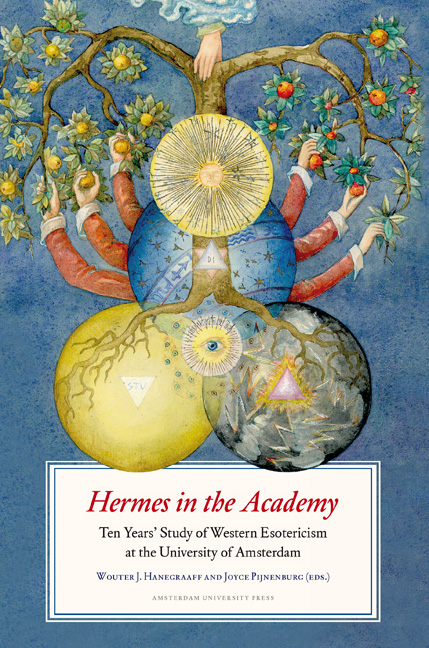From “the Hermetic Tradition” to “Western Esotericism”
Published online by Cambridge University Press: 20 January 2021
Summary
It is a privilege and an honor as well as a source of deep satisfaction to contribute to a volume commemorating the tenth anniversary of the Center for the History of Hermetic Philosophy and Related Currents (GHF). As one of Frances Yates’ last students, I vividly remember the enormous excitement that attended the publication of Giordano Bruno and the Hermetic Tradition in 1964 and The Art of Memory two years later. These works were followed by what Yates’ biographer Marjorie G. Jones has described as a “torrent of books,” and Yates’ meteoric rise to academic fame culminated in her eventual recognition as a “Dame of the British Empire” in 1976.
The theory that Yates let loose on the world with the publication of her many books is that modern science originated in a new and optimistic view of human nature that first emerged in the writings of the Florentine Neoplatonists and was carried into the 17th century through the subterranean channels of occult philosophy. The very idea that man could change his environment for the better and harness the powers of nature to his own advantage had its roots in the magical world of Renaissance Hermeticists, and the twin concepts of progress and reform, which are the hallmarks of modern science, emerged from the grandiose schemes of Renaissance magi, not from the patient accumulation of scientific evidence and scientific theories. In Yates’ view, the Rosicrucian Manifestos of the early 17th century were perfect expressions of the new and exhilarating view of human potential and prowess that made the scientific revolution possible. With their call for the “Universal and General Reformation of the whole world” and their conviction that creation can be brought back to the state in which Adam found it, The Rosicrucian Manifestos provided a bridge between Renaissance Hermeticism and modern science. On the basis of this evaluation of their importance, Yates suggested the word “Rosicrucian” should enter the vocabulary of serious historians to describe the kind of activist, reforming mentality that paved the way for modern science.
- Type
- Chapter
- Information
- Hermes in the Academy , pp. 117 - 122Publisher: Amsterdam University PressPrint publication year: 2009
- 1
- Cited by



